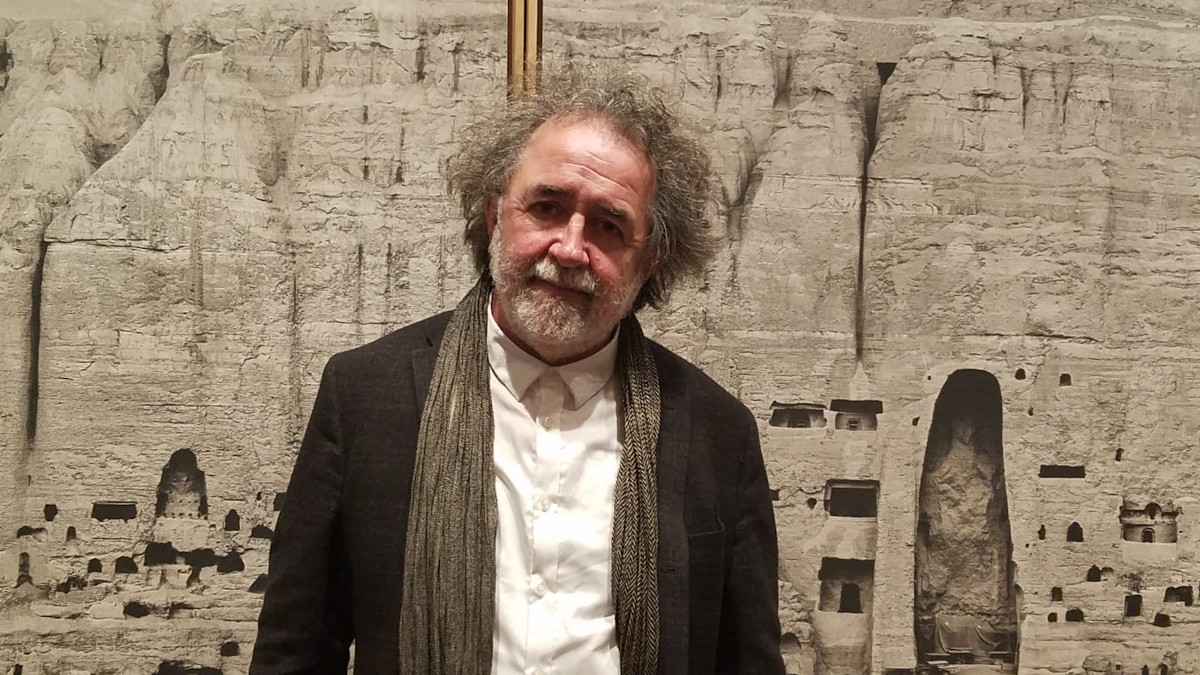For the 20th anniversary of the tragedy that destroyed the great Buddhas of Bamiyan, explore the exhibition Pictures and people, Bamiyan 20 years later (Des images et des hommes, Bâmiyân 20 ans après) at the National Museum of Asian Arts – Guimet (Musée National des Arts Asiatiques – Guimet) taking place from February 4 – June 21, 2021. Read the report from our representative Dominique Rochard’s visit..
Visiting the exhibition
Pictures and people, Bamiyan 20 years later
In the 1930’s, the museum received a share of artifacts coming from the excavation site of the French Archaeological Delegation in Afghanistan, and the exhibition was based on these. Visitors will uncover unique archaeological finds from this Afghan cliff, from the Gandhara to the islamic periods. Two titanic Buddha hands with preserved gold leaf remains can also be admired.
 |  |
This exhibition pays homage to Joseph and Ria Hackin who, accompanied by Jean Carl, conducted the survey of the site in 1923. The three archaeologists reported polychromatic paint adorning the hundreds of sanctuary caves carved out of the cliff.
 Echoing these elements, the exhibition features an enormous photographic reproduction of the site, 5 and a half feet tall and 50 feet long, split in 15 panels set up on three sides, created by visual artist and photographer Pascal Convert. The panorama shows the Bamiyan Cliff, almost a mile long and 360 feet tall, with hyper realistic and extraordinary precision, its caves and, of course, the two empty alcoves of the Buddhas.
Echoing these elements, the exhibition features an enormous photographic reproduction of the site, 5 and a half feet tall and 50 feet long, split in 15 panels set up on three sides, created by visual artist and photographer Pascal Convert. The panorama shows the Bamiyan Cliff, almost a mile long and 360 feet tall, with hyper realistic and extraordinary precision, its caves and, of course, the two empty alcoves of the Buddhas.
Pascal Convert carried out this work from memory at the request of the French Embassy. He created this panorama thanks to his collaboration with the company Iconem, specialized in documenting and preserving sites through digitization, using sophisticated high-tech shooting equipment taking no fewer than 4,000 images. He then used a printing method created in the 1870s: he used platinum-palladium print on cotton paper to reveal countless details by fusing the image with the support.
The exhibition also includes a projection of the movie “Children of Bamiyan” (“Les enfants de Bâmiyân”) showing Shia Hazaras children playing on the site and living with their family in the valley.
National Museum of Asian Arts – Guimet
Des images et des hommes, Bâmiyân 20 ans après
Exhibition commissioner-general, Sophie Makariou, president of the Guimet Museum, and Pierre Cambon, chief curator of the Guimet Museum’s the Korea, Pakistan and Afghanistan collection.
Price: €11.50 and €8.50 (reduced) to access the exhibition and the permanent collections
6 place d’Iéna – Paris 16 – www.guimet.fr
Page Facebook – Fil Twitter – Galerie Instagram
Learn more
- Watch the exhibition’s opening on YouTube with the 15 minute video “Des images et des hommes, Bamiyan 20 ans après“
- Take a look at the discussion in French between Sophie Makariou, president of the Guimet Museum and Pascal Convert, visual artist and director, about the site of Bamiyan and the exhibition
- Find out more about the Iconem project for Bamiyan
- Find out more about the commemoration project with 3D modeling Bamiyan Cliff on Pascal Convert’s website
Would you like us to do an interview, a book or documentary review, or another review relating to archaeology, whether for the general public, for children or for specialists? Write to us thanks to our form.
ArkeoTopia, an alternative approach to archaeology® aims to take a fresh look at the archaeology of today to contribute to preparing for the archaeology of tomorrow. To learn more about us, feel free to check out our institutional video and our activities.





